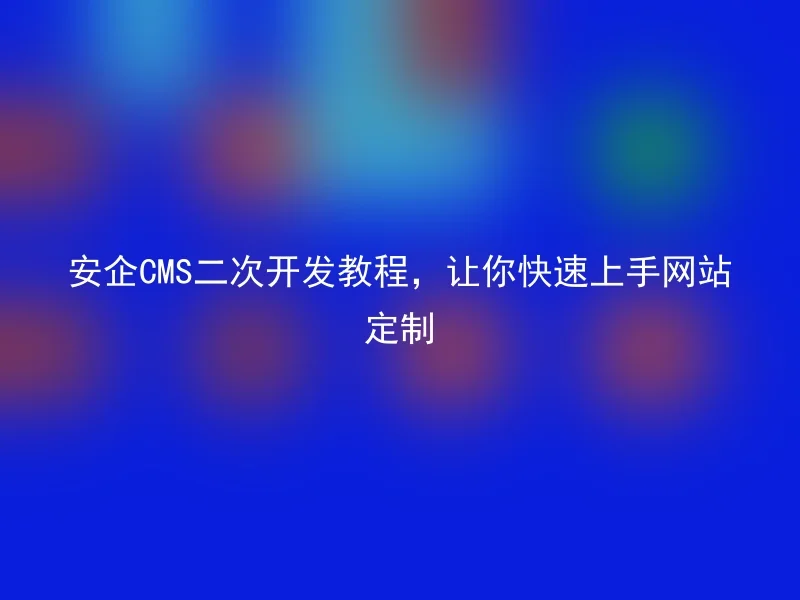
AnQi CMS is a very excellent CMS system, which is a powerful, flexible, and scalable website construction solution.And its powerful secondary development capabilities also provide users with more DIY space.This article aims to introduce the tutorial for the secondary development of Anqi CMS, allowing you to quickly master website customization through a simple and easy-to-learn process.
The AnQi CMS is an open-source website building tool developed in PHP, with a clear structure, distinct modules, customizable templates, plugins, and language files.Of course, such an excellent CMS system should be further developed. In order to meet the personalized needs of users, Anqi CMS provides a very convenient framework for further development, which allows developers to implement their own needs through simple modifications.
Firstly, we need to download and install the Anqi CMS, and after installation, we need to understand basic concepts such as template files, data models, module organization, and functional expansion.After mastering these basic concepts, we can then start with the secondary development.
First, modify the theme template
The Anqi CMS provides a rich set of theme templates, but we may need to customize the theme to meet our own needs.We can find the theme management page under the admin directory, select the desired theme and then make modifications. The modifications include page layout, color, font, plugins, and so on.
Second, modify the data model
The data model of AnQi CMS is the core of the entire system, and we can achieve the extension of functions by modifying the data model.The data model is the storage of information such as channels, articles, users, and comments.When modifying the data model, we need to first establish the extended functions, add table fields according to the requirements, and then complete the function extension by modifying the code.
Three, develop plugins
Enabling plugin development allows us to more conveniently extend the system's functionality. Plugins can be categorized into controller plugins and template plugins. Through controller plugins, we can more conveniently access template variables, while template plugins can help us more conveniently set template parameters.
Four, extending functionality through hooks
AnQi CMS provides some open hooks for us, and we can write code on these hooks to implement extended functions.For example, the front-end hook can be used to implement processing before website access, and the back-end hook can be used to extend our backend.
When developing the second version of the AnQi CMS, we should pay attention to following the development specifications, and it is recommended to use the OOP (Object-Oriented Programming) method for development, which allows us to develop more maintainable code.At the same time, we need to combine the documentation and API provided by Anqi CMS for learning and use.
In summary, the secondary development capabilities of AnQi CMS allow us to more conveniently implement feature expansion to meet different website requirements.By reading this article, you should have mastered the Anqi CMS secondary development tutorial, and now you can try to develop your own Anqi CMS website.
Not only can it provide users with a complete website building solution, but also offer extremely convenient secondary development and template creation functions.How convenient a CMS system it is, what are you waiting for, hurry up and join the ranks of Anqi CMS!
